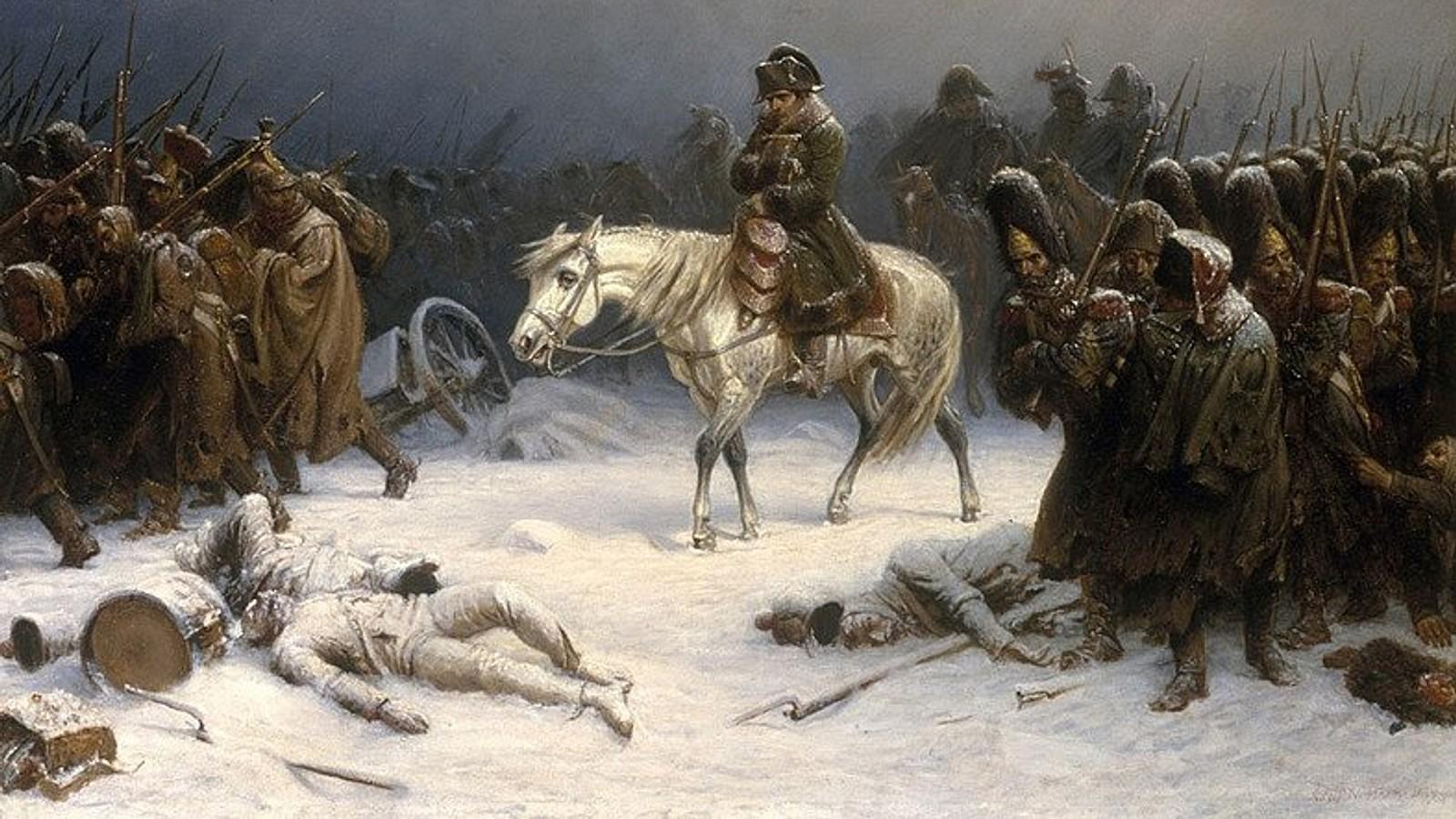Napoleons 1812 Retreat: Unveiling the Ancient Pathogens That Ravaged the Grande Armée





In June of 1812, Napoleon Bonaparte commanded a massive force, often referred to as the Grande Armée, comprising around 500,000 to 600,000 soldiers, with the ambition of conquering Russia. However, after reaching Moscow, the army faced a harsh retreat in a ruined city amid the deadly combination of winter's chill and diseases. The bitter Russian winter of 1812 became a chilling blend of epic battles and devastating diseases, where Napoleon's once formidable army found itself retreating from Moscow under assault not only from Russian tactics but also from nature and illness.
Moscow offered nothing but cold comfort as an empty prize, its ruins providing no sanctuary. Faced with the unyielding Russian winter and harrowing marches through inhospitable lands, Napoleon's forces turned back, seeking refuge as far west as Poland. The march was marked not just by footprints in snow but by bodies falling in unprecedented numbers due to diseases running rampant through the ranks. Over 300,000 soldiers perished, not from battle but due to a treacherous blend of starvation, hypothermia, and disease.
In 2001, while developing northern Vilnius, Lithuania, a mass grave was discovered, providing a chilling glimpse into the repercussions of this retreat. The excavation unearthed over 3,000 individuals, revealing harrowing details about the conditions soldiers faced. This site became a research treasure trove, with 3,269 skeletons serving as witnesses to the brutal conditions faced during Napoleon's retreat. Among the remains were gaiters, shoe soles, uniform buttons, and other remnants of military attire—a testament to their military identity and a poignant reminder of the grandeur and sudden fall of an imperial dream.
The bodies, reflecting the soldiers' attire with imperial button discoveries and other uniform remnants, served as a somber memory of a nightmarish retreat that saw hunger, disease, and freezing temperatures decimate the once grand army. Personal items like buttons from French uniforms whispered stories of soldiers who once wore them, while signs of their suffering lingered in the maladies that would later be revealed through scientific analysis.
The study of ancient DNA from the Vilnius site took researchers on a meticulous journey of discovery. Through state-of-the-art sequencing techniques, scientists examined teeth from 13 individuals who likely perished from infectious diseases during the retreat. By sequencing DNA from soldiers' teeth using cutting-edge technology, researchers identified specific pathogens that challenged long-held assumptions about the causes of the army's demise.
The team applied sophisticated phylogenetic techniques to ancient DNA extracted from the soldiers' teeth, employing methods akin to unraveling the world's oldest detective story. They sifted through DNA fragments like archaeologists sifting through sands, working from mere genetic fragments to a broader understanding of bacterial diversity and evolution. This meticulous process was like piecing together a shattered mosaic, requiring arduous authentication steps to separate genuine ancient signals from the noise shredded by time.
The research revealed two surprising pathogens: Salmonella enterica, responsible for paratyphoid fever, and Borrelia recurrentis, causing relapsing fever. These findings were authenticated through rigorous genetically-driven methodologies and represented a significant departure from previously suspected causes. The scientific endeavor highlighted that paratyphoid fever and relapsing fever contributed significantly to the army's debilitation, painting a complex picture of overlapping epidemics.
Particularly striking was the absence of certain previously suspected pathogens, such as typhus and trench fever, challenging long-held assumptions about the primary causes of disease during the retreat. No trace of Rickettsia prowazekii (the agent of typhus) or Bartonella quintana (known for trench fever) was found, steering narratives away from these expected culprits toward an unexpected army of salmonella and body lice-borne pathogens.
By examining DNA samples through millions of reads, specific pathogens emerged clearly, like Salmonella enterica serovar Paratyphi C and Borrelia recurrentis, identified through hundreds of genetic reads. Salmonella was found not in its usual typhoid form but in a rarer guise: Paratyphi C, a hidden attacker often spread through contaminated supplies. These insights were gathered using vast databases, cutting-edge analytical tools, and ancient strains matching both modern and historic data.
The presence of Borrelia recurrentis, the agent behind relapsing fever, revealed more about the pathogens that inhabited body lice, companions to the soldiers' misery during this epoch. Their genetic trail disclosed a lineage with remarkable endurance, spanning centuries across Europe. The identification of these elusive diseases leaned heavily on sophisticated mapping and comparative analysis against the sprawling backdrop of known bacterial genomes.
Historical records, including accounts from contemporaneous doctors like J.R.L. de Kirckhoff, chronicled the array of ailments afflicting the soldiers, matching some of the pathogen findings. Diaries described illnesses like typhus and dysentery, with symptoms reminiscent of paratyphoid fever, suggesting contaminated food or water contributed to the crisis. Consider the scene where soldiers desperately sliced open barrels of salted beets to stave off hunger, but those same barrels became vectors of doom, their contents a potent source for paratyphoid fever.
The graves and fragments of uniforms in Vilnius paint a poignant portrait of an army undone, not by the force of arms alone but by the intimate invasion of infection. This approach sees the past through the lens of modern science, crafting a narrative that revitalizes tales of old with insights as fresh as today's research, where each discovered pathogen adds new dimensions to the expansive tapestry of human experience.
The team's innovative application of phylogenetic placement methods fortified their analyses, using high-tech strategies like evolutionary placement algorithms. This meticulous work required sophisticated archaeological investigation and high-throughput sequencing techniques, demonstrating how DNA analysis serves as our modern-day Rosetta Stone, translating the myriad tales long held secret within the silent earth.
Such groundbreaking genetic revelations exemplify how advanced methodologies in ancient DNA research allow historians and scientists alike to peer back through centuries with unprecedented clarity, revealing not just the grand strokes of history, but the finer details that shaped it. The findings challenge our earlier assumptions and illuminate new paths for historical inquiry.

Comments